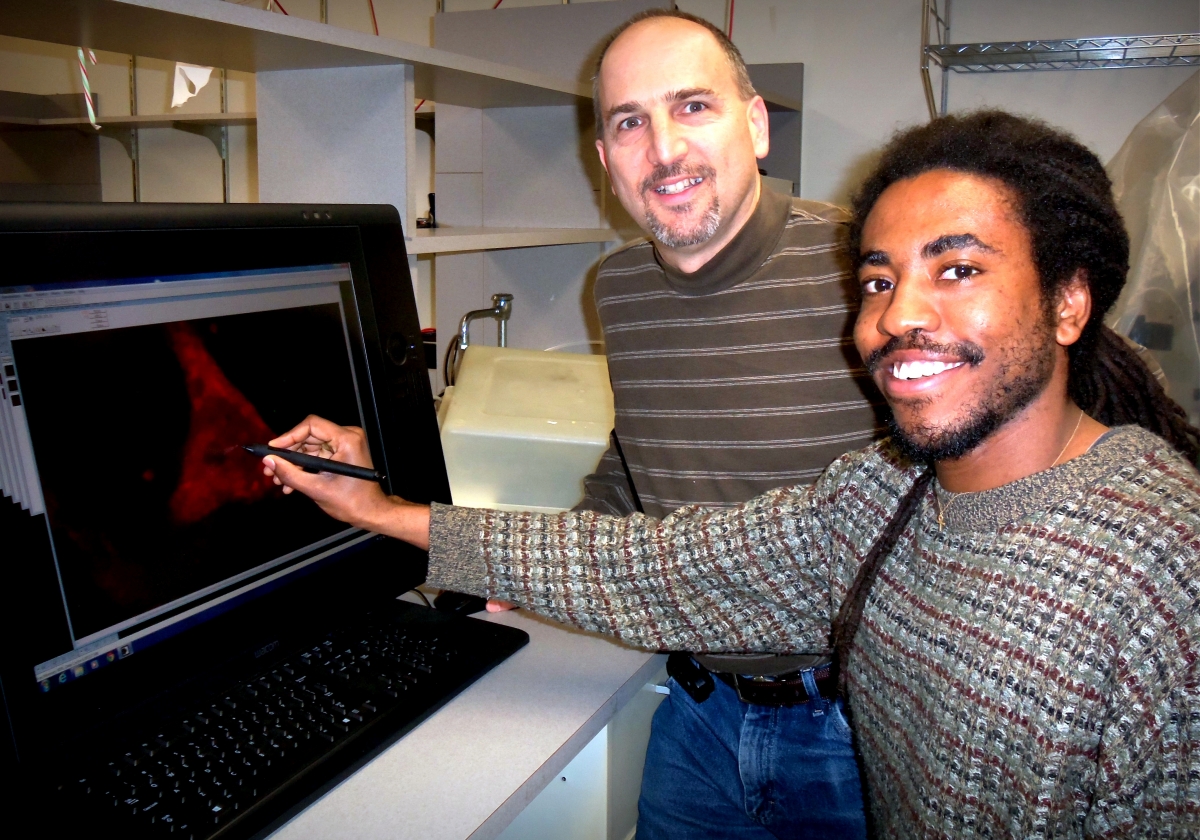Hot Publication - Sweet & Colleagues

Loss of Microtubule Associated Protein 2 Immunoreactivity Linked to Dendritic Spine Loss in Schizophrenia
Shelton MA, Newman JT, Gu H, Sampson AR, Fish KN, MacDonald ML, Moyer CE, DiBitetto JV, Dorph-Petersen K-A, Penzes P, Lewis DA and Sweet RA
Biological Psychiatry, Published online
Microtubule-associated protein 2 (MAP2) is a neuronal protein that plays a role in maintaining dendritic structure through its interaction with microtubules. In schizophrenia, several studies have revealed that MAP2?s typically robust immunoreactivity (MAP2-IR) is significantly reduced across several cortical regions. However, previous studies have not explored the relationship between MAP2-IR reduction and another dendritic alteration frequently reported in schizophrenia, lower spine density. Nor has MAP2-IR loss been investigated in the primary auditory cortex, a site of conserved pathology in schizophrenia.
Dr. Robert Sweet and investigators in the Department of Psychiatry?s Translational Neuroscience Program collaborated with colleagues from Northwestern University and the Aarhus University in Denmark to further explore that relationship. Using quantitative fluorescent confocal microscopy in primary auditory cortex tissue from 20 patients diagnosed with schizophrenia and 20 matched controls, the researchers measured MAP2-IR as well as dendritic spine density and spine number.
Reporting their findings in a recent issue of Biological Psychiatry, the research team found that the individuals with schizophrenia exhibited a significant reduction in MAP2-IR. The reductions in MAP2-IR were not associated with neuron loss, loss of MAP2 protein, clinical confounds, or technical factors. Additionally, dendritic spine density and number were also reduced in schizophrenia and correlated with MAP2-IR. Sixty percent of the study participants with schizophrenia exhibited MAP2-IR values lower than the lowest value observed in the controls; only in this group were spine density and number significantly reduced.
These findings demonstrate that MAP2-IR loss is closely linked to dendritic spine pathology in schizophrenia. Because MAP2 shares substantial sequence, regulatory, and functional homology with MAP tau, the wealth of knowledge regarding tau biology and the rapidly expanding field of tau therapeutics provide resources for identifying how MAP2 is altered in schizophrenia and possible leads to novel therapeutics.
Contributors:
Micah A. Shelton, BA, Jason T. Newman, PhD, Ken N. Fish, PhD, Matthew L. MacDonald, PhD, Caitlin E. Moyer, PhD, James V DiBitetto, BA, David A. Lewis, MD and Robert A. Sweet, MD (Department of Psychiatry, University of Pittsburgh)
Hong Gu, MS and Allan R. Sampson, PhD (Department of Statistics, University of Pittsburgh)
Karl-Anton Dorph-Petersen, MD, PhD (Translational Neuropsychiatry Unit, Department of Clinical Medicine, Aarhus University, Aarhus, Denmark)
Peter Penzes, PhD (Departments of Physiology, Psychiatry and Behavioral Sciences, Northwestern University)
This article appears in the journal Biological Psychiatry. The abstract is available by clicking here.
